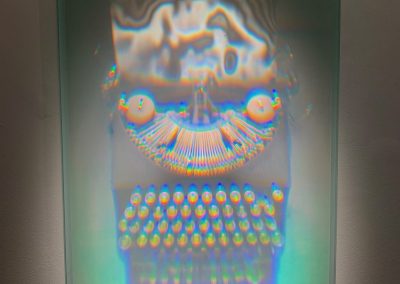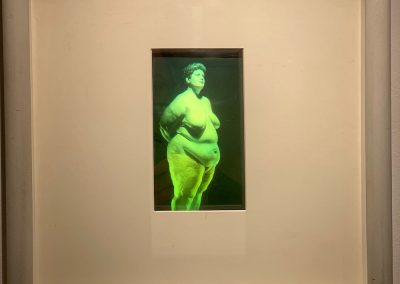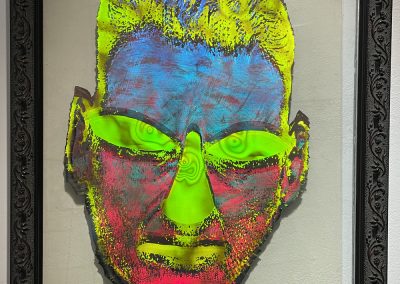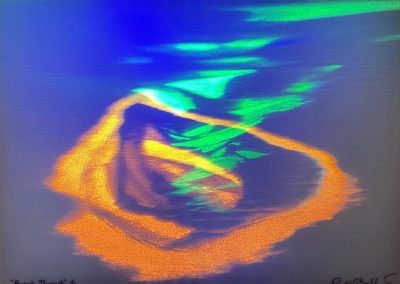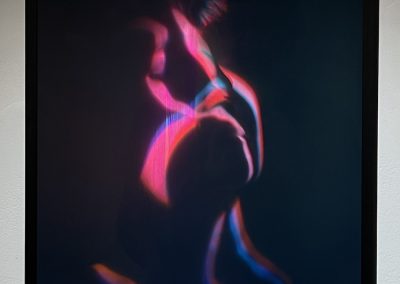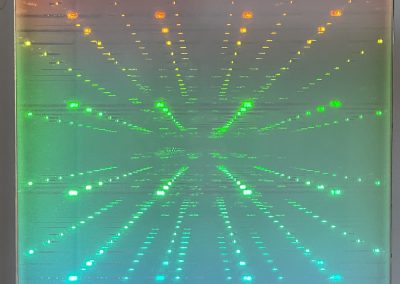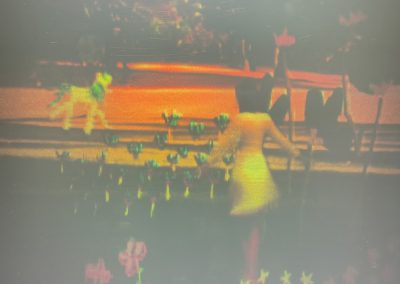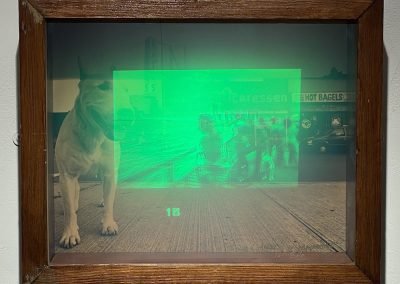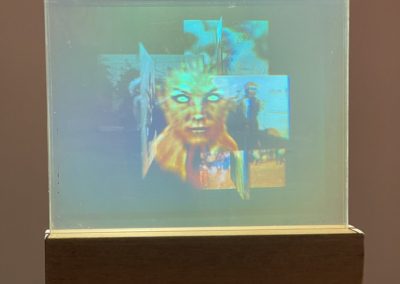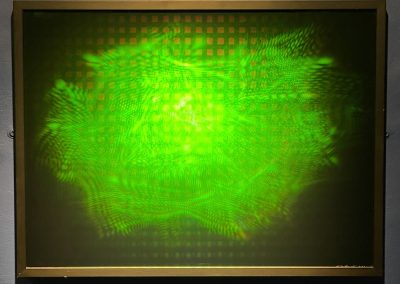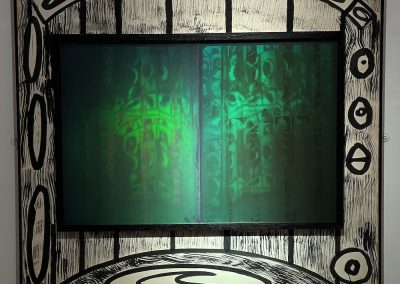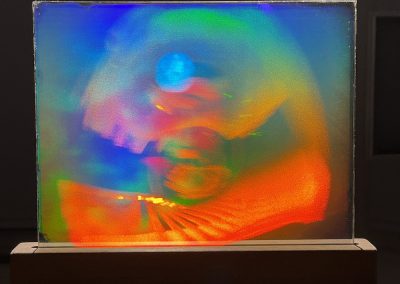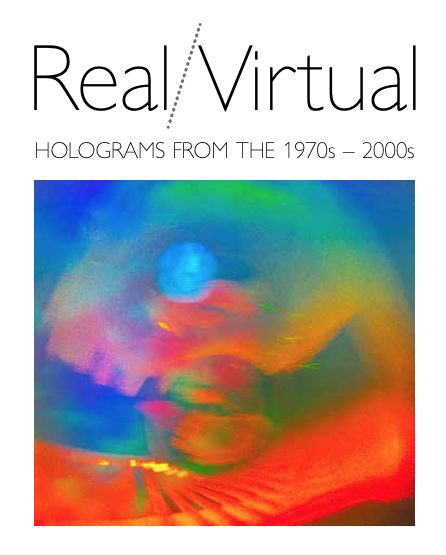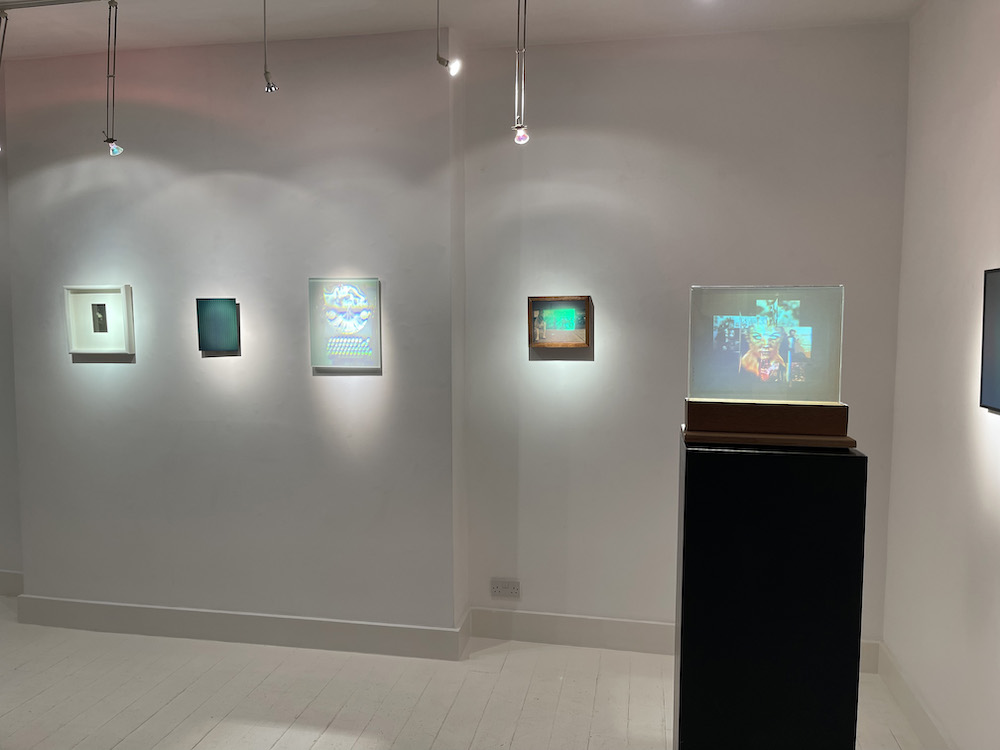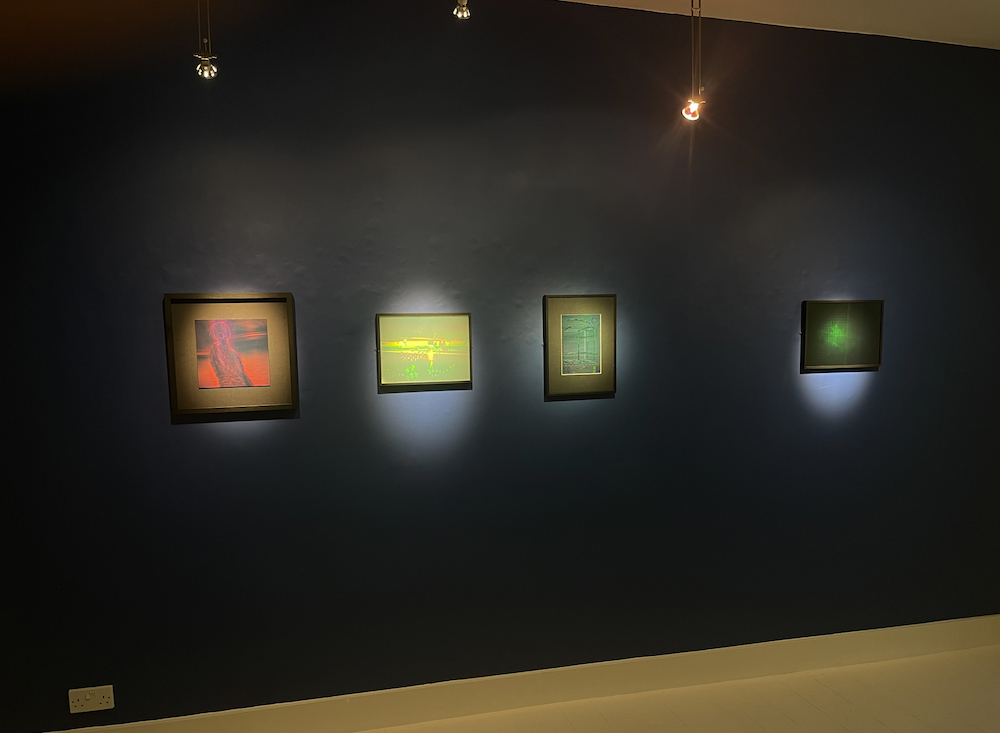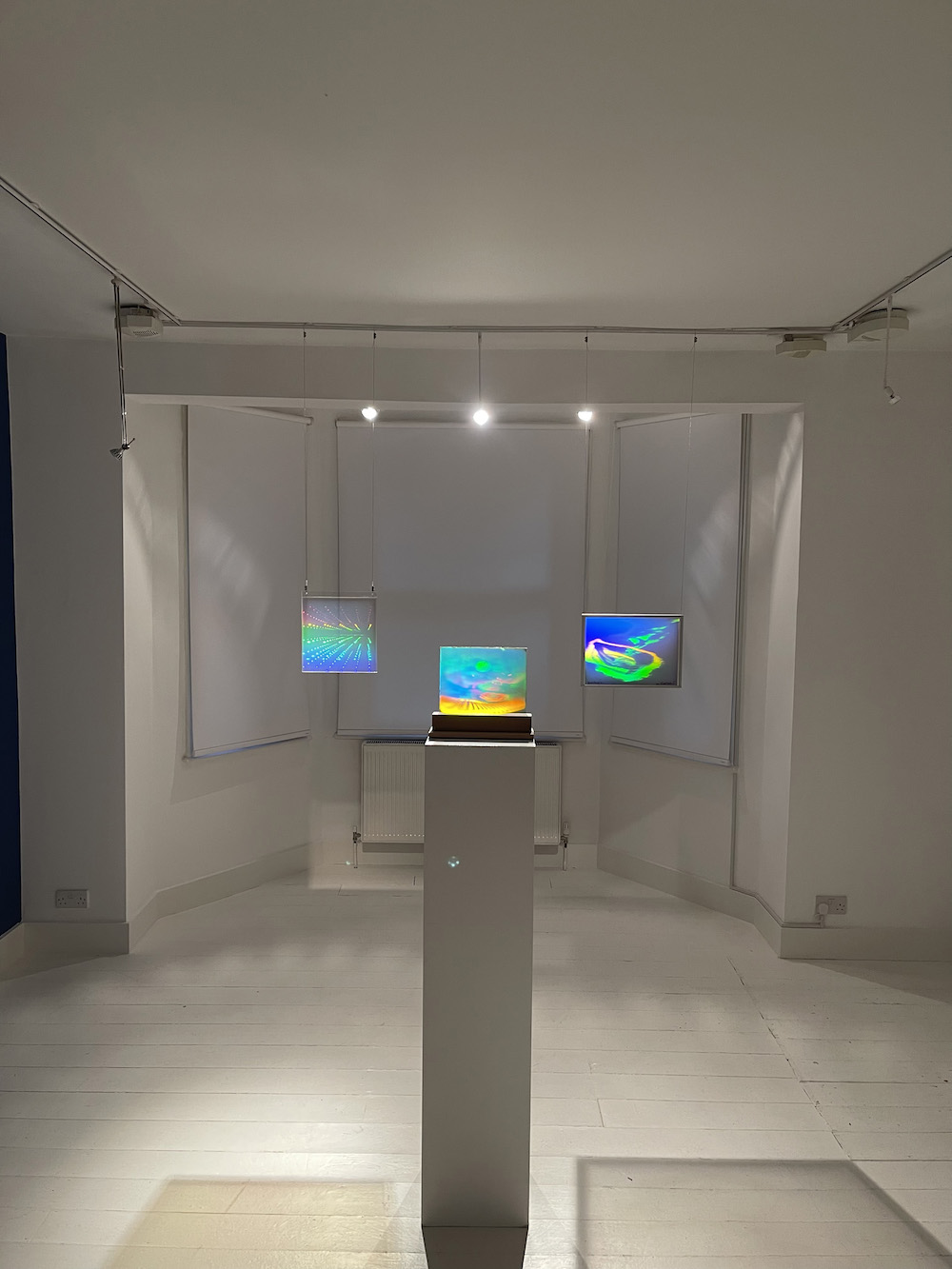Crystal Beginnings – Steve Benton & Water Ray – Paula Dawson
Real/Virtual
Holograms from the 1970s-2000s,
selected from the Jonathan Ross Collection by Sydney Koke
4 April – 21 June 2023
Private Views:
Tuesday April 4th 6.30 – 8.30pm
Thursday April 6th 6.30 – 8.30pm
Entry is free, but if you would like to attend one of the Private Views
Please confirm to jross@gallery286.com
or
07747 807576
As Soon As Possible
Open Days:
Wednesdays 12.00 – 6.30pm
Viewing by appointment at other times.
For further information contact Jonathan Ross:
Phone 07747 807576
or jross@gallery286.com
Curator
Sydney Koke is a Canadian musician, scientist, and interdisciplinary artist based in Paris, France.
After working and studying as a neuroscientist at the University of Calgary and Duke University, Koke shifted her focus to visual art and music, receiving her MFA in interdisciplinary contemporary art from Simon Fraser University, Vancouver, in 2013. Since then she has created visual art including sculptures and holograms, as well as music with multiple projects, including her experimental electronic solo project Slaylor Moon and her all-female rock group The Courtneys.
She has toured extensively worldwide and has exhibited in Vancouver, Montreal, and New York.
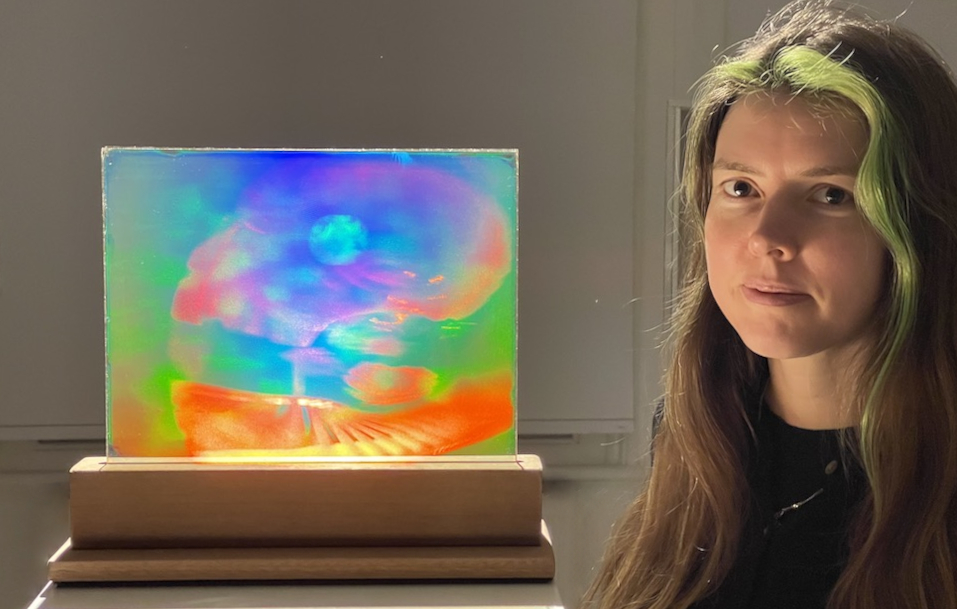
Sydney Koke with Dan Schweitzer’s ‘Seed’
Real/Virtual: holographic self-expression from the late 1970s to early 2000s
Like the many forms of contemporary art that we are now used to seeing—but not beholding—on screen, holograms require our embodied experience to be fully perceived.
Read More
With a depth and dimensionality corresponding to that of digital virtual reality, when confronted with a holographic image, we must move our bodies to discover a world that is not immediately visible. Holography asks that we exist simultaneously: to experience the virtual world created by the artist, we must also be IRL, where our bodies search and swipe, manipulating the motion, time, and visual qualities of the hologram. This duality of experience offers critical insight in this moment, when we all must address the tangible and conflicting demands of diplomacy and crisis, which are affected and even created by the online virtual worlds that we increasingly inhabit.
This exhibition looks back through holography from the late 1970s to the early 2000s, and celebrates the spirit of generosity and mind-expanding adventure shared by the artists of the international holography community. As a guest curator in the Jonathan Ross collection, I have specifically chosen to present holograms that illustrate the range of possibilities for personal self-expression, world-building, and shape-shifting: Susan Cowles’ House of Moons (A Stage for the Chymical Theatre) (1988), which contrasts the technical brilliance of a hologram with a lively ink on paper frame to depict human cognition as a psychedelic theatre; Amy Rush’s vibrant digital hologram I’m Spinning Around (2005), with its newly constructed Alice among the talking flowers-type world; works that connect historical artefacts to contemporary conversations, like Harriet Casdin-Silver’s stunningly body-positive Venus of Willendorf (1991), originally featured on the cover of Sculpture magazine; and works by 12 other international artists, whose meanings are connected, materially and conceptually, to the specificity of holography as a medium.
As a technology with many early applications in politics, medicine, and business, holography holds incredible potential for artists, who have historically overcome the demands of equipment and expertise to create highly intentional work. Although artists working in other mediums have discovered holography’s potential (such as Louise Bourgeois and James Turrell), contemporary holography has not been widely exhibited and, like performance art, holds unique challenges to documentation.
This exhibition offers a rare opportunity to experience transformative works from just one possible history of holography, in a moment when global centres for holography education, exhibition, and practice are in decline. Paradoxically, recent technological advances have made the process more accessible than ever: the materials required to make holograms, such as lasers and photopolymer film, are relatively affordably and increasingly available. By celebrating the unique expression of these important figures in the history of holography, it is my hope that this exhibition will encourage any one of us to attempt our own holographic works, so that we may invite others into our future as-yet-invisible worlds.
Sydney Koke
Introduction
When I first encountered holography, at the Royal Academy’s Light Fantastic exhibition in 1976, it was definitely considered to be the medium of the future but now, since the digital revolution, we look at its analogue origins as something historical. Its darkroom techniques have more in common with early photographic processes than the screen-based activities of contemporary imaging.
Digital holography certainly has the potential to make the medium more accessible to artists and designers working in the field of 3-dimensional design and animation but analogue holography, created in studios which are essentially optical engineering laboratories for the manipulation of laser light, remains to me the most wonderful thing. That a volume of 3-dimensional space can be recorded on a 2-dimensional glass plate and reconstructed with a beam of white light from a spotlight is pure magic.
Read more
For many people today, the word ‘hologram’ may suggest something from a science fiction movie (Princess Leia has a lot to answer for) or a reanimated dead pop star (poor Tupac Shakur) and to involve some sort of projection system in a theatre or music venue, rather than something that belongs in an art gallery. It seems a long time since the 1980s and 90s when hologram exhibitions and galleries proliferated and the Royal College of Art had a department teaching holography.
Sydney Koke, who is an artist/musician/neuroscientist, was developing an interest in holography and asked if she could visit my collection, which is one of the few places in the world where ‘vintage’ holograms can be viewed. The hologram collection was established as a resource from which to make exhibitions and a reference source for those interested in researching the development of holography from the 1970s -2000s, so it is always gratifying to meet someone who shares my interest in the subject. I loved her response to the work and suggested that she might like to curate an exhibition for me.
It has been interesting to observe her choices, which include works by some of the most important pioneers of the medium, and it has been a great opportunity to exhibit pieces that have never been seen in the UK before and others that have not seen the light for years. I consider my collection to be a sort of Library of Light so I am delighted to take some of these early works off the shelves and to share them with a new audience.
I dedicate this exhibition to Steve Benton, Rudie Berkhout, Harriet Casdin-Silver, Dan Schweitzer and all the other holography pioneers who deserve to be better known.
Jonathan Ross, April 2023
In the future it will become clear that Jonathan Ross bears the same relation to early holography as do the rare early collectors of photography. I hope that the Ross collection will remain together and be preserved, not only as a repository of fine holographic art from the early phase of the medium, but also as a case study in the taste of an important early collector and a document of how, in its infancy, the medium appealed to its public.
Chris Titterington, Victoria & Albert Museum, 1994
List of artists and works on show
STEVE BENTON
(1942-2003)
‘Crystal Beginnings’ 1977
White light transmission hologram
12”x12”
INAKI BEGUIRISTAIN
Born 1972
‘Reflections’ 2002
Multi-colour reflection hologram
30x40cm
RUDIE BERKHOUT
(1946-2008)
‘Breakthrough’ 1990
White light transmission hologram
30x40cm
PATRICK BOYD
Born 1960
‘Jackson Makes it to Manhattan’ 1990
Achromate reflection hologram and photograph in box frame
8”x10”
HARRIET CASDIN-SILVER
(1925-2008)
‘Venus of Willendorf 1991’ 1991
Nickel shim stereogram
180mm x 98mm
SUSAN COWLES
Born 1962
‘The House of Moons’ (A stage for the Chymical Theatre’) 1988
Reflection hologram
2 plates 40 x 30cm
PAULA DAWSON
Born 1954
‘Water Ray’ (Study for Luminous Presence) 2007
25 x 25cm
Computer graphic holographic stereogram
JACQUES DESBIENS
‘Distortions’ 2009
Full colour digital holographic stereogram
25 x 18cm
IKUO NAKAMURA
Born 1945
‘Memory II” 1999
White light transmission holographic stereogram
ANA MARIA NICHOLSON
Born 1939
‘Collaborative Work 3’ 1989
43 x 32cm
made with Rudie Berkhout
CAROLINE PALMER
Born 1957
‘Diamonds and Stripes’ 1989
Multi-colour reflection hologram
AMY RUSH
Born 1980
‘I’m Spinning Around’ 2005
Full colour digital stereogram
DAN SCHWEITZER
(1946-2001)
‘The Seed’ 1980
White light transmission hologram
8”x10”
DORA TASS
‘Perturbing Object’ 2015
Dichromate gelatin reflection hologram
41 x 34cm
STEVE WEINSTOCK
Born 1965
‘Big Lucian’ 1992
Mirror backed white light transmission hologram
A full-colour catalogue is available for this exhibition. You can view and download it as a pdf file, free of charge.
Use the button below which, depending on your web browser, will open a new page to view the catalogue and download it onto your device.
Look for the download icon (often in the top of your browser window).


